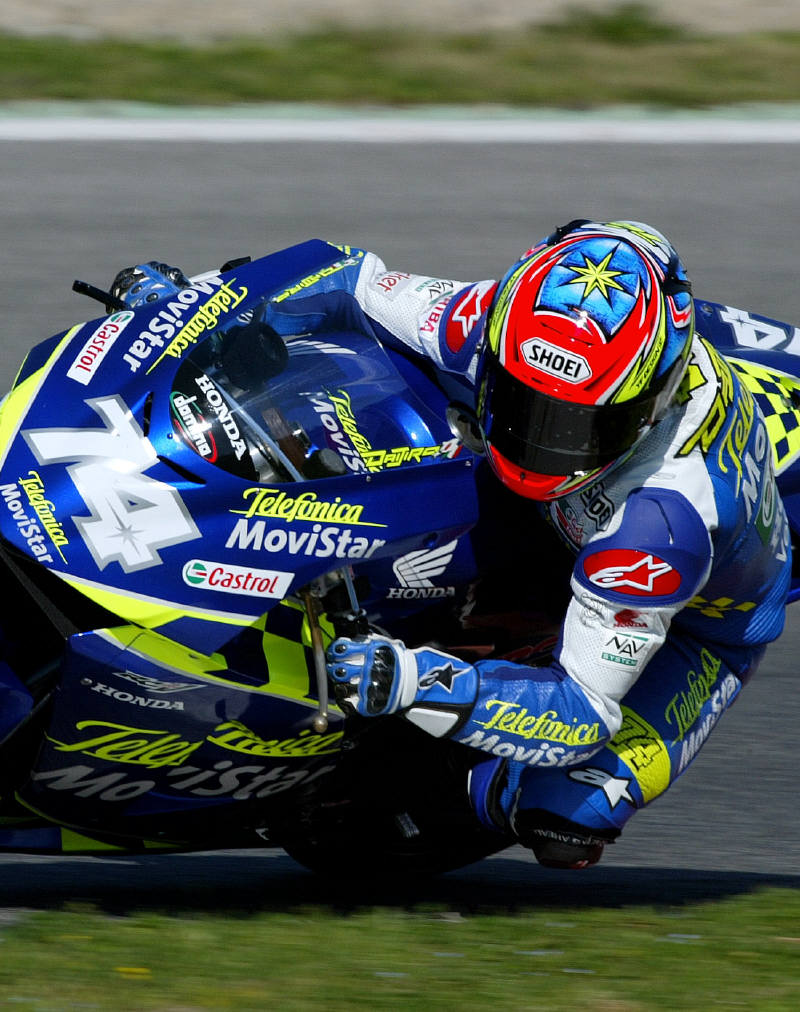Kato report recommendations.
As well as establishing what caused Daijiro Kato's death at the season opening Japanese Grand Prix, the Accident Investigation Committee also made three recommendations to prevent such an accident, and its tragic outcome, in the future.
That part of their report is shown below:
Recommendations of the Accident Investigation Committee:

As well as establishing what caused Daijiro Kato's death at the season opening Japanese Grand Prix, the Accident Investigation Committee also made three recommendations to prevent such an accident, and its tragic outcome, in the future.
That part of their report is shown below:
Recommendations of the Accident Investigation Committee:
Vehicle Oscillation Characteristics and Rider Operation.
This Committee's examination of the high side-like phenomenon and weave mode from the perspective of vehicle behavior does not necessarily bring the whole story of the accident to light.
For example, phenomena arose during the race that would present no problem at all under normal circumstances, but in this case occurred as part of a variety of overlapping factors that caused the serious problem of oscillation divergence. The various factors are not just limited to the characteristics of the motorcycle, but also include rider handling of the vehicle.
However, clear identification and handling of these particular oscillation phenomena by a rider is itself thought to be quite difficult at present. In that sense, it is important to further investigate the factors and circumstances involved in oscillation phenomena particular to motorcycles, including rider handling of vehicle operation, under various conditions.
Research and Development into Protective Equipment.
From the perspective of the medical forensics investigation, future measures to ensure rider safety include an examination of the layout, shape and materials of protective structures on the course. In the first place, as in ordinary accidents, racing accidents each have different causes and occur with different modalities.
It would therefore be of value to improve the effectiveness of protective structures to reduce by even a small amount the shock of impact in an unforeseen collision.
In Kato's case, it was his crash into the foam barrier rather than the collision with the tyre barrier that resulted in the forward occipitoatloid dislocation that proved fatal. Therefore, if we limit our examination to his accident alone, we can say that if the protective structures at the accident site had been of a more uniform structure, the way in which he would have been injured would have been different, and may not have led to such a serious outcome.
In addition, the way in which the barriers were laid out, such as the gap between them, may also have exacerbated the accident. FIM presently does not have a uniform standard for the safe installation of protective barriers. To reduce safety risks even minimally, we hope that FIM will proactively promote research and development in the area of protective barrier safety, and create such standards.
Attention to the Safety of Rider Equipment.
There have been significant improvements recently in riding gear, which even in Kato's accident provided nearly perfect protection to his head and body. It did not, however, protect the vital cervical area connecting his head and body, and the cervical hyperextension that occurred when his head and torso (chest and abdomen) were traveling in different directions resulted in an ultimately fatal forward occipitoatloid dislocation.
Normally, freedom of neck movement is preserved to avoid any hindrance to motorcycle operation, but we hope to see the development of protective equipment that could momentarily immobilize the head and torso firmly if the body is subject to abnormal shock, such as a violent fall.
Such equipment would also be useful in preventing the cervical spine dislocations frequently seen in forensic autopsies of victims of fatal accidents on ordinary motorcycles, and could contribute significantly to rider safety.


